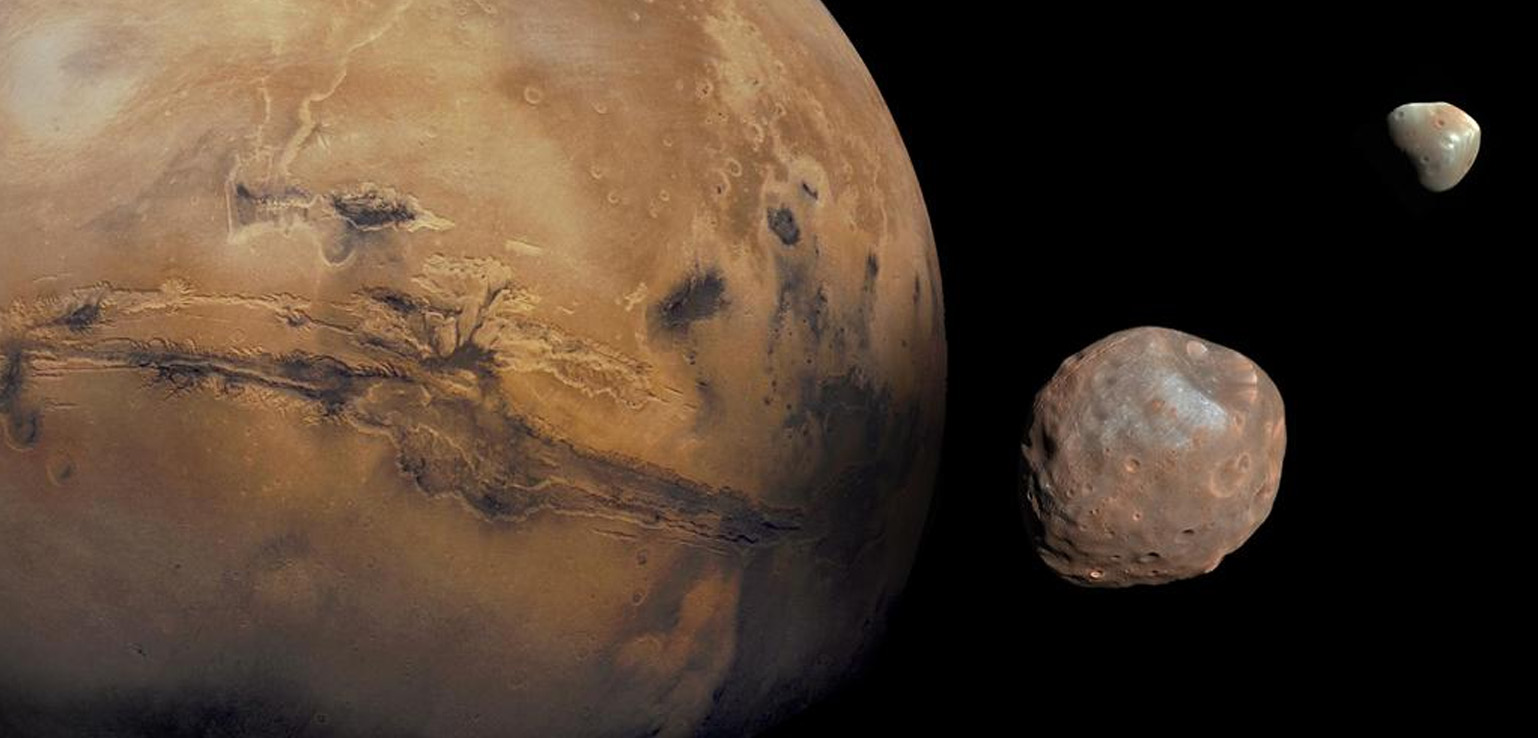On October 5th at 11am, Terry Hurford a planetary scientist for NASA Goddard gave a presentation entitled “Tidal Activity on Phobos”.
Summary
Phobos, the innermost satellite of Mars, displays an extensive system of grooves that are mostly symmetric about its sub-Mars point. Phobos is steadily spiraling inward due to the tides it raises on Mars lagging behind Phobos’ orbital position and will suffer tidal disruption before colliding with Mars in a few tens of millions of years. We calculate the surface stress field of the deorbiting satellite and show that the first signs of tidal disruption are already present on its surface. Most of Phobos’ prominent grooves have an excellent correlation with computed stress orientations. The model requires a weak interior that has very low rigidity on the tidal evolution time scale, overlain by an ~10–100 m exterior shell that has elastic properties similar to lunar regolith as described by Horvath et al. (1980).
The presentation can be seen here.
View Presentation
